Selling port is a bit of an uphill climb. This is an era of esoteric drinking, with somms championing the latest undiscovered region, Sunotry sending Scotch into outer space, and the rest of us gearing up for the dry, fruity, nuanced powerhouse reds of fall.
And of course, port has its stereotypes: sweet, uncomplicated, stuff to suck back at a bridge game or knitting contest (those exist, right?). But port is actually a nuanced drink—not just that, it’s affordably nuanced, meaning, once you get into it, you don’t have to start shelling out in triple digits to get something decently complex.
Because a quick history lesson makes any booze sexier, port is basically the result of some Eighteenth Century military bickering between the English and the French. At one point, shipping channels were shut down, so the English—known to like a drop here and there—turned to other wine producers, including producers of the Duoro Valley in Portugal. A neutral spirit was added to keep the wine from spoiling during transport home (bringing port up to its average 20% ABV). Of course, port production has evolved, with a variety of styles (see below) and price points, many of which are worth climbing if and when you realize you actually love the stuff, whether you’re pre-gaming for a T. Swift concert or staying in because, dammit, it’s cold out and a DVR full of The Walking Dead is calling, or zombie-moaning, your name.
Cockburn’s Fine Ruby Port
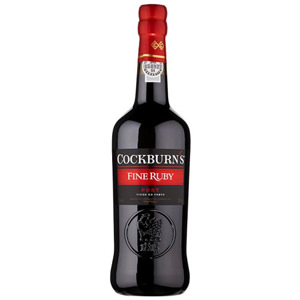 A great entry level port if you’re looking for some fortified fruit and don’t hate on a little residual sweetness. A “Ruby Port” is aged for no more than three years, and filtered, meaning it won’t benefit from any further aging (but that also means you can open it and exposure to oxygen won’t ruin it, so drink as you please). This one’s a great value with a soft mix of dark berry fruits and even some tobacco leaf. At about $11 bucks, that makes for a super affordable dessert wine.
A great entry level port if you’re looking for some fortified fruit and don’t hate on a little residual sweetness. A “Ruby Port” is aged for no more than three years, and filtered, meaning it won’t benefit from any further aging (but that also means you can open it and exposure to oxygen won’t ruin it, so drink as you please). This one’s a great value with a soft mix of dark berry fruits and even some tobacco leaf. At about $11 bucks, that makes for a super affordable dessert wine.
Sandeman’s Founder’s Reserve Ruby Port – BEST ENTRY LEVEL RUBY
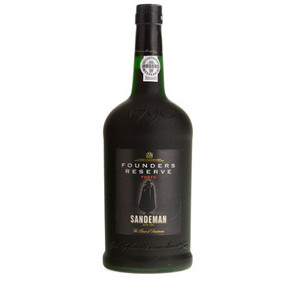 Where basic “Ruby port” is aged no more than three years, a Reserve Ruby like this one gets a couple more years in the barrel or steel vat (this one gets five) meaning you’ll get the classic powerful fruit and berry flavors of a Ruby port tempered by just a touch of age. A good step up, and only a few dollars more, if you’re looking to add a little edge to the fruit, heat, and sweetness of a classic ruby.
Where basic “Ruby port” is aged no more than three years, a Reserve Ruby like this one gets a couple more years in the barrel or steel vat (this one gets five) meaning you’ll get the classic powerful fruit and berry flavors of a Ruby port tempered by just a touch of age. A good step up, and only a few dollars more, if you’re looking to add a little edge to the fruit, heat, and sweetness of a classic ruby.
Warre’s Otima 10-Year Tawny Port
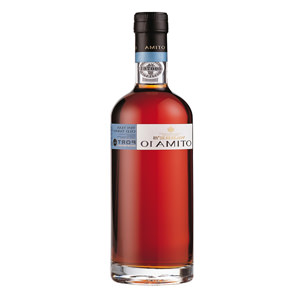
This 10 year option is a great place to start with a tawny port. Unlike a ruby port, tawnies must be barrel-aged for a minimum of seven years (though it can get as high as 20, 30, even 40 year tawnies). You’ll see more 10 or 20-years, which tend to be ligther in color thanks to the extended aging and oxidation. That also means, as with this offering from Warre’s Otima, more influence from the barrel, with mellowed fruit notes matched with anything from wood and nuttiness to brown sugar, citrus, vanilla, and spice. Bonus points: a very handsome and unusually clear bottle looks modern and hip enough for your friends to believe it’s not just for the older generation.
Graham’s 20-Year Old Tawny Port (Half Bottle) – BEST ENTRY LEVEL “SERIOUS” TAWNY

If you find yourself liking the “tawny phenomenon,” this half-bottle may be the way to step up your game. Yes, it’s about $35 bucks for 375mL, but you’re also not over-investing in a full-size bottle of next-level tawniness (which you may or may not quite love). Chances are, if you like a 10-year tawny, you’ll love this one, since there’s still a presence of amber-hued fruit in there along with yet more barrel-aged complexity: spice, toffee, licorice, stone fruit, coffee, not to mention a bone dry finish and some bracing acidity.
Ferreira 2011 Vintage Port
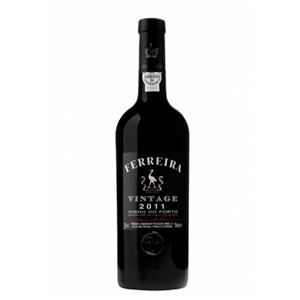
Because prices go up rapidly once you hit vintage port, the $90 Ferreira is a good, affordable entry-level option. Briefly, vintage port ages briefly in the barrel, but unlike tawny ports (which gain complexity from the barrel), vintage port gains its character from years—decades, often—in the bottle. That means they retain more of their rich fruit and tannic structure (as well as deep coloration), resulting in powerful ports like this one from Ferreira—juicy, acidic berry notes balanced by full tannins and a rich body. (PS – If a Vintage port says “Quinta,” that simply means it came from the grapes of one vineyard; traditional vintage ports are from a blend.)
2000 Niepoort Vintage Port – BEST “SUPER” TAWNY
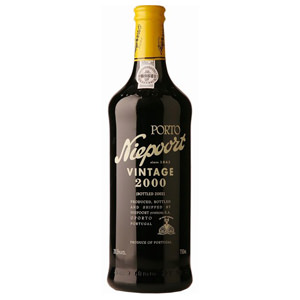 Basically a tawny port treated like a vintage port, with grapes selected all from one year (tawny ports can blend grapes from a variety of years) that’s barrel-aged at least seven years. The resulting oxidative effects of protracted barrel-aging, with a mellower fruitiness that leans toward amber nuttiness and softened, woody complexity. Rich and rewarding, they’re also pretty hard to find. If you’ve found yourself enjoying older tawnies, and see this offering from Niepoort (or any Colheita), don’t hesitate to lay down some serious green.
Basically a tawny port treated like a vintage port, with grapes selected all from one year (tawny ports can blend grapes from a variety of years) that’s barrel-aged at least seven years. The resulting oxidative effects of protracted barrel-aging, with a mellower fruitiness that leans toward amber nuttiness and softened, woody complexity. Rich and rewarding, they’re also pretty hard to find. If you’ve found yourself enjoying older tawnies, and see this offering from Niepoort (or any Colheita), don’t hesitate to lay down some serious green.
Churchill’s White Port Dry Aperitif

White port can often be relatively unexplored territory for port drinkers, but it’s worth checking out—flavors range from sweet to dry, aged in steel vats or wood, and since it’s made with white grapes exclusively, you’ll get a very different bouquet of flavors. This (pretty damn beautiful) bottling from Churchill’s gets 10 years of age, yielding a nicely dry aperitif with notes of spice and even herbaceousness along the mellower, dry fruit.
